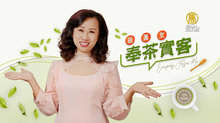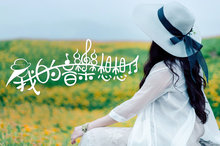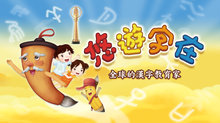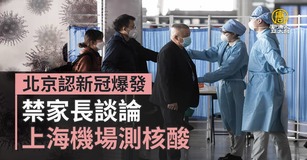【新唐人2011年4月19日訊】繼上海“染色饅頭”被曝光後,溫家寶 “痛斥染色饅頭”。但就在官方喊打擊的同時,有毒食品仍然繼續在生產,而且種類層出不窮。國家質檢總局被質疑“作秀”。
中國大陸上海、溫州、海口等城市,最近頻頻發現“染色饅頭”。據了解,許多超市和高校長期販賣這種饅頭。
溫家寶在14號“痛斥染色饅頭”,他說,近年來相繼發生“毒奶粉”、“瘦肉精”、“地溝油”、“染色饅頭”等事件,這些惡性的食品安全事件足以表明,誠信的缺失、道德的滑坡已經到了何等嚴重的地步。
不過,溫家寶一邊說,“染色饅頭”仍然一邊生產。4月18號,浙江「溫州市政府」網站發佈消息說,抓捕了3名制售“染色饅頭”的違法涉嫌者,不過黑作坊老闆仍在逃。
他們沒用一顆玉米,卻用檸檬黃、糖精鈉、玉米香精等多種添加劑,做出了成千上萬的“玉米饅頭”。據工人說,“檸檬黃”、“玉米香精”和成的麵團,是用來製作玉米饅頭的﹔而不加色素的麵團用來製作白饅頭。為增加甜度和香度會加一些糖精和香精。
而黑作坊賬本顯示:從3月22號到4月14號,不到一個月期間,他們共賣出這種饅頭19萬4千8百個。其中1萬1千個賣給附近一所高校。
除了“染色饅頭”之外,最近網上還流傳“衛生紙饅頭”。海南海口一名老者買了饅頭吃,半天嚼不爛,吐出來一看,居然是一大坨“衛生紙”!
同時,在廣西南寧,有民眾反應,不光有“彩色饅頭”,還有“彩色黑豆”,有超市把過期長了綠霉的黑豆,重新貼上標籤出售。
而在重慶,出現了“化妝豬”,商販給豬肉塗上食用鹼,讓肉色變得新鮮紅潤。食用鹼是一種食品添加劑,若添加劑量過大對人體有害。
大陸各地的有毒食品層出不窮,難怪有人嘆息說,這片土地上還有真正能吃的沒?
除了哀嘆誠信的喪失,民眾還質疑監督機構的失靈。東莞網友說:國家質檢總局為甚麼總是在某產品被曝光後才說:“堅決打擊,決不手軟?”蘇丹紅,毒大米,毒豇豆,三聚氰胺奶,皮革奶,瘦肉精,染色饅頭。。。這些在曝光前在包裝上可都有質檢局的QS標籤!
不過,在監督本國食品安全上老是“馬後炮”的國家質檢局,日前再次發佈公告表示,鑒於日本核泄漏事故對食品安全的影響,禁止進口的食品範圍將擴大到日本的12個都縣。
這一舉措是否能代表國家質檢局牢牢的把關著食品安全呢?評論員舒可心表示,其實中國原來也沒有從日本這12個縣進口多少東西。這可能是一個政府的行政秀,實際意義並不是很大。
新唐人記者尚燕、周昕屹綜合報導。
Translated by Cecilia Liu cecilia.d.liu@gmail.com
Production of artificially-colored steamed buns
continues in China despite Premier Wen Jiabao』s
condemnation of the scandal. Citizens question
the state Administration of Quality Supervision
for its ineffectiveness in ensuring food safety.
Recenty, artificially-dyed steamed buns were found
in several eastern Chinese cities.
Many supermarkets and universities
have been selling such steamed buns for years.
On April 14, Chinese Premier Wen Jiaobao
condemned food safety scandals in recent years.
"These virulent food safety incidents have shown
the grave situation of the degradation of morality
and the loss of credibility," he said.
Yet the production of artificially-dyed buns
continues despite Wen』s speech. On April 18,
the Wenzhou government website reported
3 suspects were arrested for dying steamed buns,
but the head of the workshop was still at large.
Officials found synthetic lemon yellow dye,
as well as artificial sweetener and flavoring,
being added to unfinished steamed buns
to make wheat buns look like corn flour buns,
which could be sold at higher prices.
The workshop』s record shows 194,800 dyed buns
were sold from March 22 to April 14,
11,000 of which were sold to a nearby university.
Moreover, “tissue paper buns” were found recently
in Haikou city, Hainan province, where tissue paper
was used to make fake steamed buns.
Also, in Nanning, Guangxi, artificially dyed beans
are sold in supermarkets.
Though expired these blackened beans
are relabelled and sold in some markets.
In Chongqing, dietary alkali was found in pork
to make the meat look fresh and pink.
Experts say dietary alkali is harmful
to human body when consumed in large quantities.
Frequent food safety scandals lead to the question:
what is safe to eat in China?
The public questions the ineffectiveness
of the state Administration of Quality Supervision.
Internet users say autorities only investigate
food safety issues after the problems are exposed.
The tainted foods all had “Quality Safety” label
before the scandals broke out.
The state Administration of Quality Supervision
recently issued an extended ban on imported foods
from areas in Japan affected by the nuclear crisis.
Analyst Shu Kexin believes such a ban does not
reflect increased effort in ensuring food safety.
It is likely to be government』s admistrative stunt,
as China has never imported much food
from the current affected areas of Japan.
NTD reporters Shang Yan and Zhou Xinyi
看下一集

【禁聞】江系力挺唱紅打黑 薄熙來肆無忌憚

【禁聞】三流藝術家能成為抓捕理由嗎?

【禁聞論壇】美國的又一大“罪狀”

【禁聞】“世紀大講堂”訪談 中國不和諧

【禁聞】“世紀大講堂”訪談 中國不和諧

【禁聞】濫用抗生素 養殖業恐養出超級細菌

【禁聞】李莊案第二季開幕 律師界對壘重慶

【禁聞】中國外儲攀新高 專家:大包袱

【禁聞】中國外儲3萬億美元 專家:大包袱

【禁聞】毒食品氾濫 學者:根源中共假惡暴

【禁聞】艾未未成華媒言論自由試金石

【禁聞】村官換屆被操控 選舉成過場

【禁聞】民選村長遭砍殺 村官選舉被操控

【禁言博客】官場忽悠何時休

【禁聞】十萬個為甚麼 阿拉伯人問中國媒體

【禁聞】地質學者:保護湄公河生態






 財經趨勢4.0
財經趨勢4.0 新聞大破解
新聞大破解 新唐人財經新聞
新唐人財經新聞 選戰大透視
選戰大透視 遇見新聞
遇見新聞 老外看中國、老外看台灣
老外看中國、老外看台灣 美麗心台灣
美麗心台灣 田美女奉茶實客
田美女奉茶實客 廚娘香Q秀
廚娘香Q秀 大千世界
大千世界 1000步的繽紛台灣
1000步的繽紛台灣 好樣!Formosa
好樣!Formosa 健康1+1
健康1+1 談古論今話中醫
談古論今話中醫 我的音樂想想
我的音樂想想 胡乃文開講
胡乃文開講 她健康She Health
她健康She Health 天庭小子-小乾坤
天庭小子-小乾坤 總統教育獎
總統教育獎 全國孝行獎
全國孝行獎 健談交流
健談交流 悠遊字在
悠遊字在 傳奇時代
傳奇時代 音樂大賽特別節目
音樂大賽特別節目









